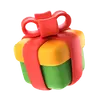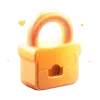Currency and Measurement in Costa Rica
Using and Exchanging Currency
The Metric System in Costa Rica
A Metric Conversion Calculator
If you are planning to live here, you must learn the knack of converting dollars or euros to colones. The standard questions is, “Why? Can’t I just use dollars? Aren’t dollars accepted everywhere?”. The answer is a clear NO, and there are several excellent reasons:
Using Dollars in Costa Rica
- Regardless of what the tour books or travel agents tell you, dollars and especially euros are NOT accepted everywhere in Costa Rica.
- The locations that will accept dollars are generally tourist havens, which, while you may think that is just fine, is not realistic as it restricts where you can shop.
- Almost ANY location in Costa Rica that has prices marked in dollars is charging far too much. I know of almost no one who lives here that buys goods marked in dollars. There are a few exceptions of course.
- Those truly superb off-the-road spots away from San Jose and other tourist centers are where you will find that truly extraordinary piece of ceramic, or an astonishingly beautiful painting, or other work by Costa Rica artisans, and THAT is where you will get stuff at tremendous prices. They almost never accept dollars or credit cards.
- The are a zillion really excellent small eateries called ‘sodas’ all over Costa Rica that serve often excellent food at amazingly low prices… often a full meal and desert, for less than $3.00. I have found few that accept dollars.
Exchange Rates & Exchanging Currencies
Costa Rica is perhaps the only country in the world where you generally will not take a beating when paying in dollars and receiving colones in change. Occasionally, there may be a 2-3 colón ‘commission’, but even this not always charged.
Oddly, it is sometimes the banks that charge a higher commission! In fact, recent reports are that persons exchanging euros for colones at Costa Rica’s banks are often subject to rather wild differences in exchange rates. IN the case of two banks, less than a block apart, one bank quoted ¢615 (us$1.33), while another quoted ¢625 (us$1.35) for one Euro. I think this is odd as the dollar is falling against the euro and the euro is considered by some to be the more stable currency. Similar exchange rate problems occur with the Canadian dollar.
Part of the reason for this variance may simply be that The Banco Central de Costa Rica sets the exchange rate for the Euro but doesn’t publish that rate on the bank website.
Many banks will not exchange anything but dollars, Canadian dollars or euros. Reportedly, there is one company, Financiera Londres, in downtown San José that will exchange just about any currency for another currency, so you re able to change just about any major currency.
NEVER EVER change money in the San Jose airport! While you will be treated fairly in most other locations, that place will gouge you badly.
WARNING: Be very cautious of the money changers you will see in downtown San José. These people lurk outside the banks waiting for people who do not have the time or the patience to wait in the long banks lines. They do a money switch thing which is really clever to watch and you end up with less money, the wrong change, or counterfeit bills. As there are always police nearby who do nothing, it appears arrangements have been made to avoid police interference.

OH NO! The Metric System!
Those folks visiting from the US seem to be scared to death of the metric system. The US is probably the only developed country in the world that doesn’t use it, and as it is barely covered in the schools, it is not widely known by many Gringos.
However, Costa Rica, like much of the world, is on the metric system, so whether traveling here or planning to live or retire in Costa Rica, it is best to learn a bit about it. I’ll try to make it as painless as possible.
Miles vs. Kilometers (see calculator below)
All speedometer, odometers and mileage marker signs in Costa Rica are in kilometers. OK, you can think of a kilometer as 1,000 meters, but THAT implies you know what the heck a meter is. So here is a much faster way to deal with this conversion.
The relation between kilometers and miles is approximately 3 to 2. So…. One Kilometer is about 2/3 mile. So if the sign says 100 KM it is about 66 miles. If you are driving to the beaches of Guanacaste, a trip of about 240 KM, it is about 160 miles.
Now let’s discuss something very important about distances in Costa Rica. Costa Rica is small and when you look at a map that shows maybe 150 KM to your destination, you may think, “150 KM? Why that’s only 100 miles. I can be there in and hour and a half or two hours at the most. Ummm… no, you can’t. While the kilometers may be accurate, you must take into account the condition of the roads, the fact that few roads at all are marked, and even those that are easy to drive go through mountains with a zillion curves and you may (read that as WILL) find yourself following a truck going uphill at 10 KMH (about 10 MPH) for 25 miles and unable to safely pass! See Driving in Costa Rica.
My general rule is, if it would take 1 hour to get there if I lived in the USA or most of Canada, it will take two or more times that amount to drive it in CR.
And THAT brings us to gasoline and liters. Other than as an exercise in conversion, you really don’t need to know how to covert liters to gallons. Just tell the attendant to fill your tank (lleno, pronounced jay-no with a soft j sound). To fill a normal tank (not a 4 X 4) will be about 28,000 colones, or as of June 2008, maybe $55.00. Read more on gas prices here.
The final conversion is volume and liquids that really are important only if you are cooking! a 2 liter bottle of Coke is about the same size as the big bottle in the USA. In fact, before I left the USA, there were actually 2 liter bottles on the shelves! All I know is never order a 2 liter drink before you sit down in a theatre to watch Dances with Wolves….
Acres and Hectares
Property in Costa Rica is purchased in Hectares, not Acres. One hectare is about 2.5 acres, but just use the calculator below to do the work.
Domestic Measurements, weight and volume
The kilo (kilogram) is used to measure weights, each kilo being made up of 1,000 grams. A kilo is about 2.2 pounds.
Everything in the grocery stores is also in metric, so if you bring your cookbooks, you will have to do the conversion. The converter below will handle that for you.
Temperatures
No Fahrenheit here! You have to learn that a beautiful day is about 25 degrees (centigrade) and you’ll be sweating if its 33!
Here is a nice conversion calculator that may help you for lengths, volumes and weight. To use it:
- Pick length, volumes or weight from the drop down box
- Next, pick a category like gallons (under volume!) , enter a number, like a “1” in that cell and
- Finally, hit the “return” or “enter”” key on keyboard.
You will then see all the possible answers for 1 gallon.. For instance 1 Gallon = 3.7854411931710645 liters!
Try another? After selecting length in the drop down box, place a “1” in the kilometers cell and hit return. You’ll now see that one kilometer = 0.62120999 miles.
Email this page to a friend









